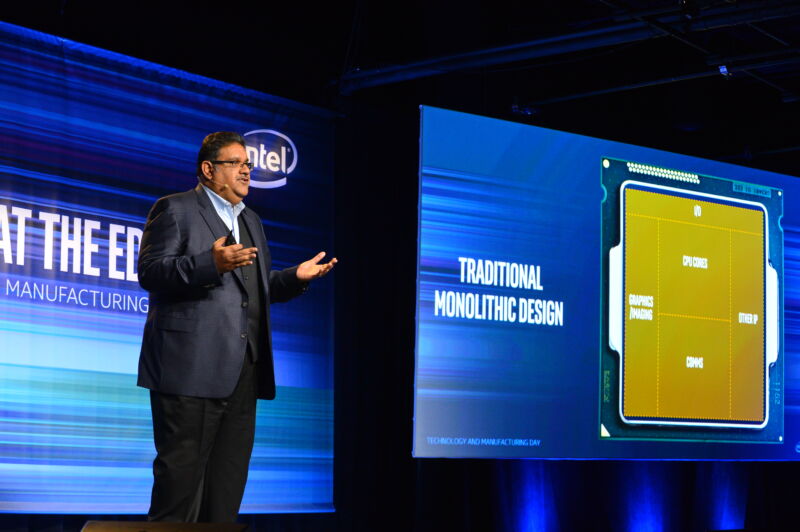
The past few years have been tough times for Intel, and after last week's news that intel's 7nm parts had been delayed (again), this week the company is announcing a shakeup to the executive team. The biggest news is that Intel's chief engineering officer, Murthy Renduchintala, is leaving the company.
Renduchintala joined Intel in 2016, when the company lured him away from Qualcomm with a $8.1 million signing bonus and total compensation package worth up to $25 million. He has been Intel's chief engineering officer for just over three years now and was described as "the company's second most powerful executive" behind then-CEO Brian Krzanich.
Renduchintala ran the wide-ranging "Technology, Systems Architecture and Client Group (TSCG)" group. In Intel lingo, "Technology" with a capital T specifically includes the chip-manufacturing division that has struggled so much. The group came under Renduchintala's watch in 2018, and since 2018, 7nm has been continually described as "on track."
With Renduchintala gone, TSCG will be split into five parts and given to other Intel executives. Intel hopes the change will "accelerate product leadership and improve focus and accountability in process technology execution." The Technology Development group will now live under 24-year Intel veteran Ann Kelleher. Intel's press release says Kelleher's goals include "accelerating the ramp of Intel's 10nm process" and that she will "lead Intel technology development focusing on 7nm and 5nm processes." Kelleher got her start at Intel Ireland in 1996 as a Process Engineer and worked her way up the fab-management ladder.The past few years have been terrible for Intel. Back in 2013, the company's original roadmap was to spend 2014-2015 on the 14nm node and then move to 10nm in 2016-2017, but an endless string of problems and setbacks with 10nm led to the company spending five years on the 14nm node. A shaky transition to 10nm only started in 2019, and the company still doesn't have 10nm desktop or server parts. With Intel spinning its wheels, AMD has returned to a second golden age with the Zen architecture and headline-grabbing Threadripper core counts. AMD is even starting to get attention from laptop OEMs.
Intel completely missed out on the smartphone revolution, too, having been unable to come up with an answer for the rise of the ultra-low-power ARM SoC. After its smartphone insurgency, ARM chips quickly moved on Intel's territory by spreading to tablets and laptops. Intel's latest black eye is being completely dumped by Apple, which, after building its own ARM design house for the iPhone and iPad, has announced plans to upscale its ARM chips to Mac laptops and desktops.
Murthy Renduchintala will leave Intel on August 3, 2020.
The Link LonkJuly 29, 2020 at 04:20AM
https://ift.tt/3jVWmFN
Heads roll at Intel after 7nm delay - Ars Technica
https://ift.tt/2YXg8Ic
Intel

No comments:
Post a Comment